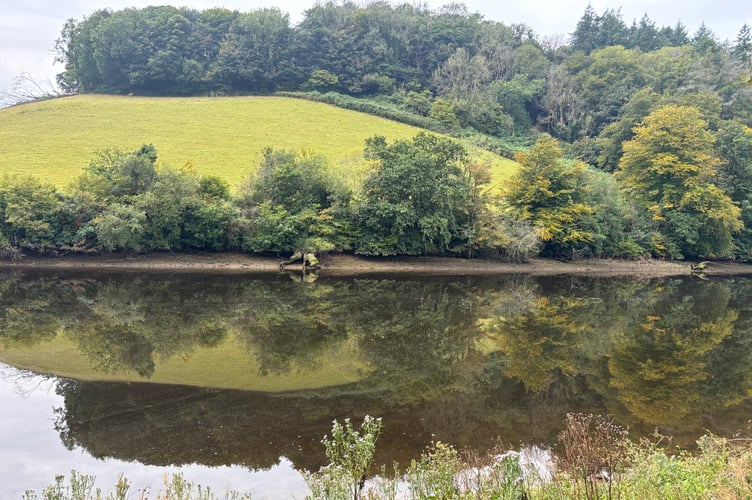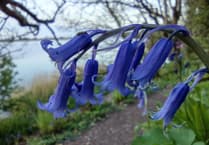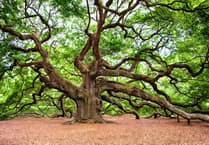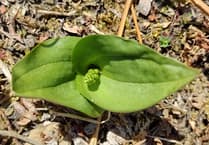As the South Devon National Landscape’s Estuaries Officer, it is very much part of my work to highlight the wonder and value of our special estuaries. To treasure and actively respect our estuaries, it helps to have at least some knowledge and understanding of them. And I have to say that that can just as much apply to me too!
I have recently become aware of two shoreline habitats and their special wildlife communities that have been staring me in the face for years! One of these are the greater value of the trees that grow along the banks and are such a feature of all our local estuaries. Probably mostly oaks which are more obvious from their form and size but looking more closely, many other species such as blackthorn and willow, and even hazel and hawthorn too.
Their ‘new’ recognised value is that as their branches spread out across and dip into the tidal waters, they are themselves a high tide extension of the shoreline nursery for many species of fish and other animals. In the magazine article that alerted me to this, even suggesting them to be our UK version of tropical mangroves!

We’ve long recognised that our estuaries are hugely important as egg laying and nursery ecosystems for many species of fish, some of which are commercially important. The numerous young of these fish are the protein rich prey of bigger fish and part of their strategy to stay alive is to keep to the shallows where the bigger fish might struggle. The smaller fish also hide in the floating fronds and leaves of seaweeds, seagrasses and saltmarshes and migrate up the shore as the tide comes in and retreat back as the tide ebbs.
What we hadn’t fully realised, is that on the higher spring tides, the overhanging tree branches, twigs and even exposed roots are also important sheltering habitats for these fish. And not just of the living trees but those that may have reached the end of their life or fallen through bank erosion – themselves then helping dampen further wave erosion.

Nature is rarely tidy but on one hand the nature of the tides creates a perfect clean line of saltwater pruning of the lowest leaves of the trees as they reach out their spread. And on the other hand, a haphazard random edge of fallen trees and branches. Now we have another reason to leave these fallen trees, beyond their being a highwater roost for birds, as a landward extension and almost continuum of the estuary itself.
To highlight the other estuary wildlife community, I have come to realise, we must first look along the coast to the shingle shores along the likes of Start Bay and particularly the upper shore at Strete Gate at the northern end of the Slapton Line.

As we might imagine, the shingle drains very quickly so plants that survive here need to put down long roots and be able to tolerate the difficult conditions that include a good dousing of salt spray during rough weather. Some of these plants are quite unusual and beautiful – the yellow horned poppy, sea kale, viper’s bugloss, to name but a few. This unusual habitat, the conditions and community of plants also support some equally unusual insects and are collectively described as ‘vegetated shingle’, a UK priority habitat. Strete Gate is well worth a visit over the summer and early autumn months, even without knowing the plant names - head along the top of the shore towards Dartmouth but please be aware that it is also an area popular with nudists.

What has this got to do with estuaries? We recently came across a similar community of plants along a stretch of the upper shore on the Dart Estuary and although there is no shingle there, the broken fragments of slate along the there support very a similar habitat with similar conditions. We are hoping that our colleagues within the Biodiversity Records Centre might be able to verify that this is indeed worthy of being a ‘vegetated shingle’ community? Hiding in plain sight, we have to wonder what other treasures we have missed along our special estuarine shores – many with valuable ecosystem services such as coastal defence, the wellbeing of their natural beauty, as well as enhancing the local biodiversity and fisheries.






Comments
This article has no comments yet. Be the first to leave a comment.